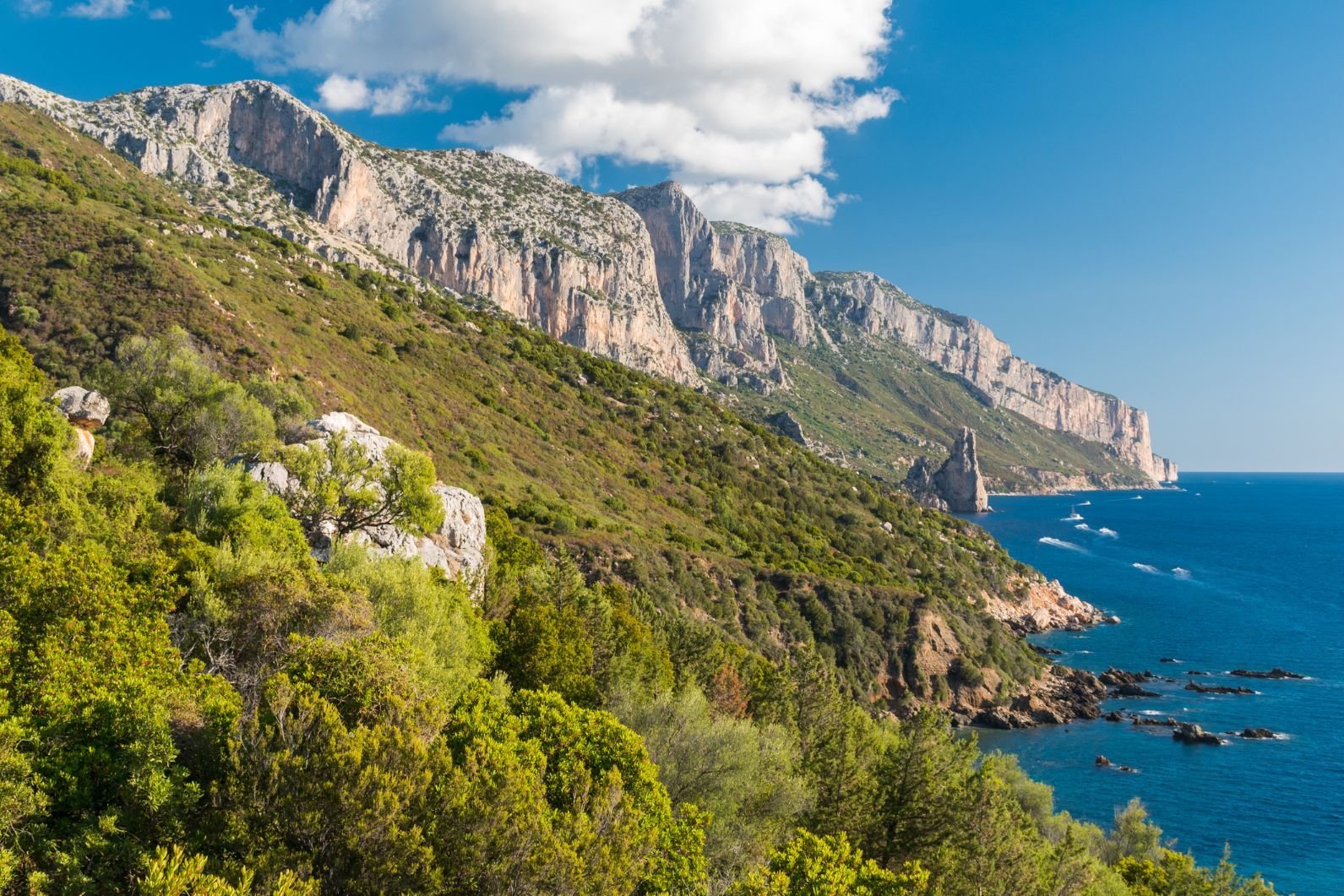The Selvaggio Blu trek in Sardinia is often described as Italy’s toughest trek. Many go even further and describe the route along the isolated Mediterranean coastline, on limestone rocks and cliffs, as the toughest trek in the world. What’s for sure is that the 40-45km route is more of a mountaineering expedition than a walk - hence why despite the short distance, it usually takes between four and seven days to complete. The route involves abseiling and graded climbs, and route-finding on the Selvaggio Blu - knowing which of the trails in the area to actually follow - is famously challenging.
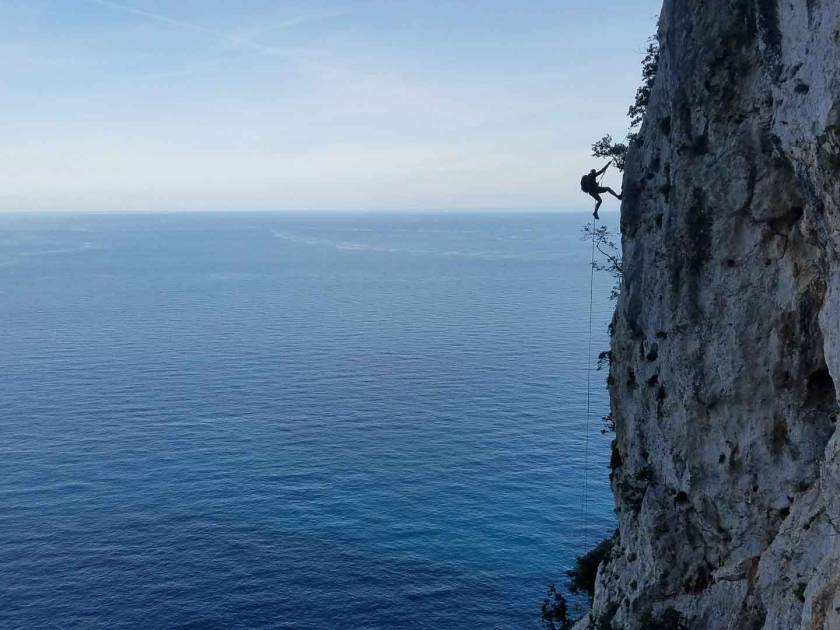
The Selvaggio Blu route will handsomely reward you with views, however. Lonely Planet describe the route as “the stuff of myth [...] traversing thickly wooded ravines and taking in bizarre limestone formations, caves and staggeringly sheer cliffs.” You'll see the odd pig, and wild goats in the distance.
Think far-reaching vistas out over the Mediterranean Sea, hidden coves impossible to otherwise reach and olive trees dotted around cliffs coloured by euphorbias.
Owing to the difficulty, there are actually several versions of the Selvaggio Blu which have sprung up, some of which bypass the graded climbing altogether, and make the trail much more accessible. This is not one fixed route - but the key to the trek is staying as close to the coast, and water as possible. Whichever route you choose, you’re in for remarkable views - but the core route remains the most coveted, and it’s that route that we are going to focus on here.
This is a trail defined by the Mediterranean Sea, hidden coves which cannot otherwise be reached except by boat and olive trees dotted around cliffs coloured by euphorbias. It's as far from the overdeveloped, flop and fry tourist traps as you can get. Think of steep, sharp rocks jutting out the water, and looking down on them amidst scents of strawberry trees, juniper and olive groves. This is a route for experienced outdoors folk, but it’s a route of real beauty. This is our introductory guide to Selvaggio Blu - one of the world’s great multi-day trips.
To trek the route, you’ll need more extensive mapping and a great local guide. This isn't one to go alone, unless you're a seriously experienced mountaineer.
Where is the Selvaggio Blu?
The Selvaggio Blu trekking route can be found on the coastal cliffs of the Gulf of Orosei, in the district of Baunei on the east coast of Sardinia, a large Italian island in the Mediterranean Sea. The route typically starts at Pedra Longa (pinpointed on the map above), and finishes at Cala Sisine, further up the Sardinian coastline.
A brief history of the Selvaggio Blu trekking route
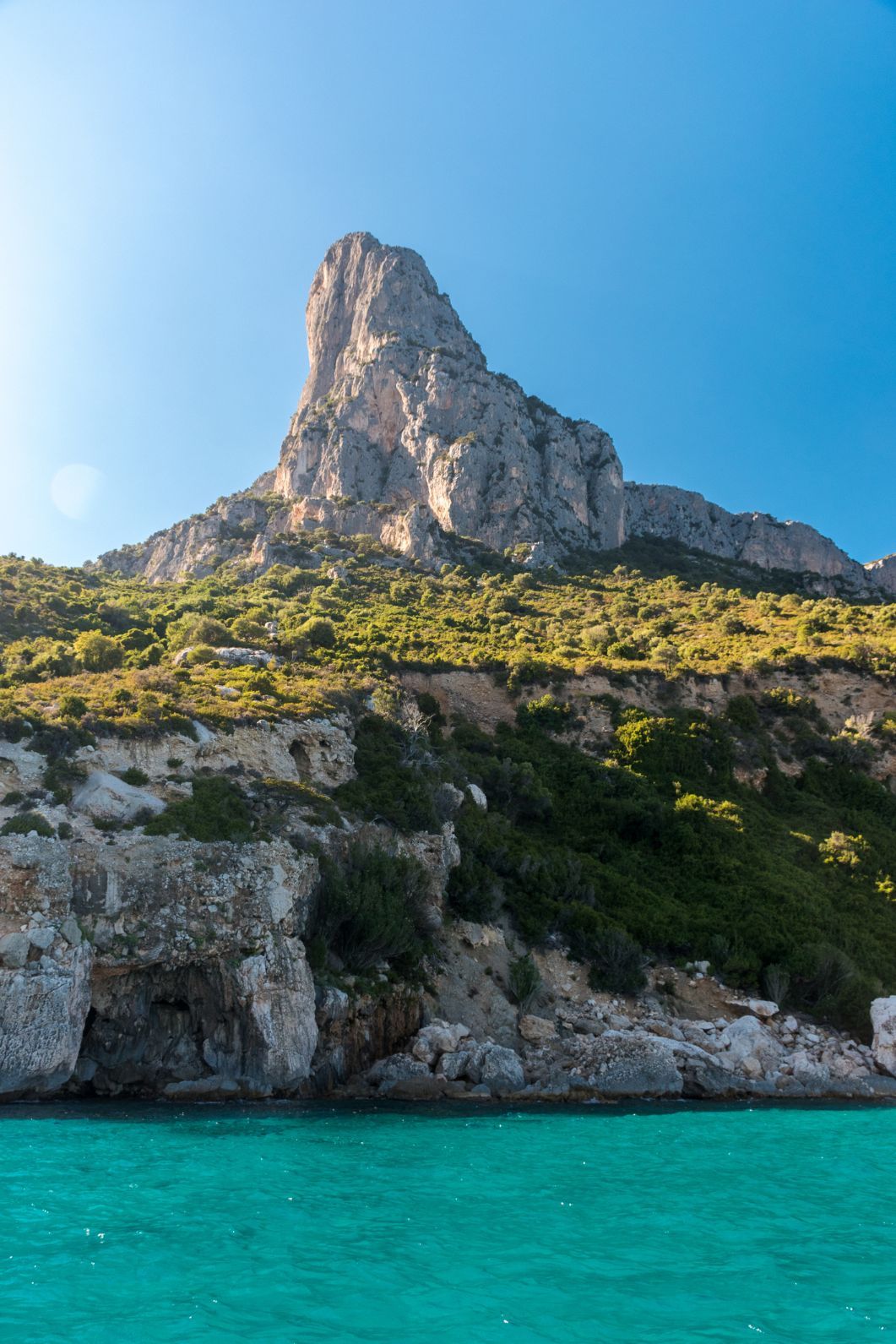
The phrase ‘Selvaggio Blu’ literally translates to English as ‘wild blue’ - and the route is very well-named indeed. The route was created in the late 1980s by Mario Verin, a photographer and alpinist, and the architect Peppino Cicalò, who was the President of the Italian Alpine Club’s section in Nuoro, a city in central-eastern Sardinia. Cicalò had initially dreamed up the route, and walked parts of it, in the early 1960s. But it wasn’t until years later, when he met Verin while studying in Florence, that the full route was established.
Two renowned Italian rock climbers, Alessandro Gogna and Maurizio Zanolla, also played their part in the story, after establishing a climbing route in the area in 1981 which featured core elements of the Selvaggio Blu.
Cicalò and Verin later walked the route in 1987. The name 'Selvaggio Blu' followed in the coming years, and the route was subsequently promoted by the region of Baunei, drawing the world's attention for its stunning surroundings.

Why is the Selvaggio Blu trekking route so challenging?
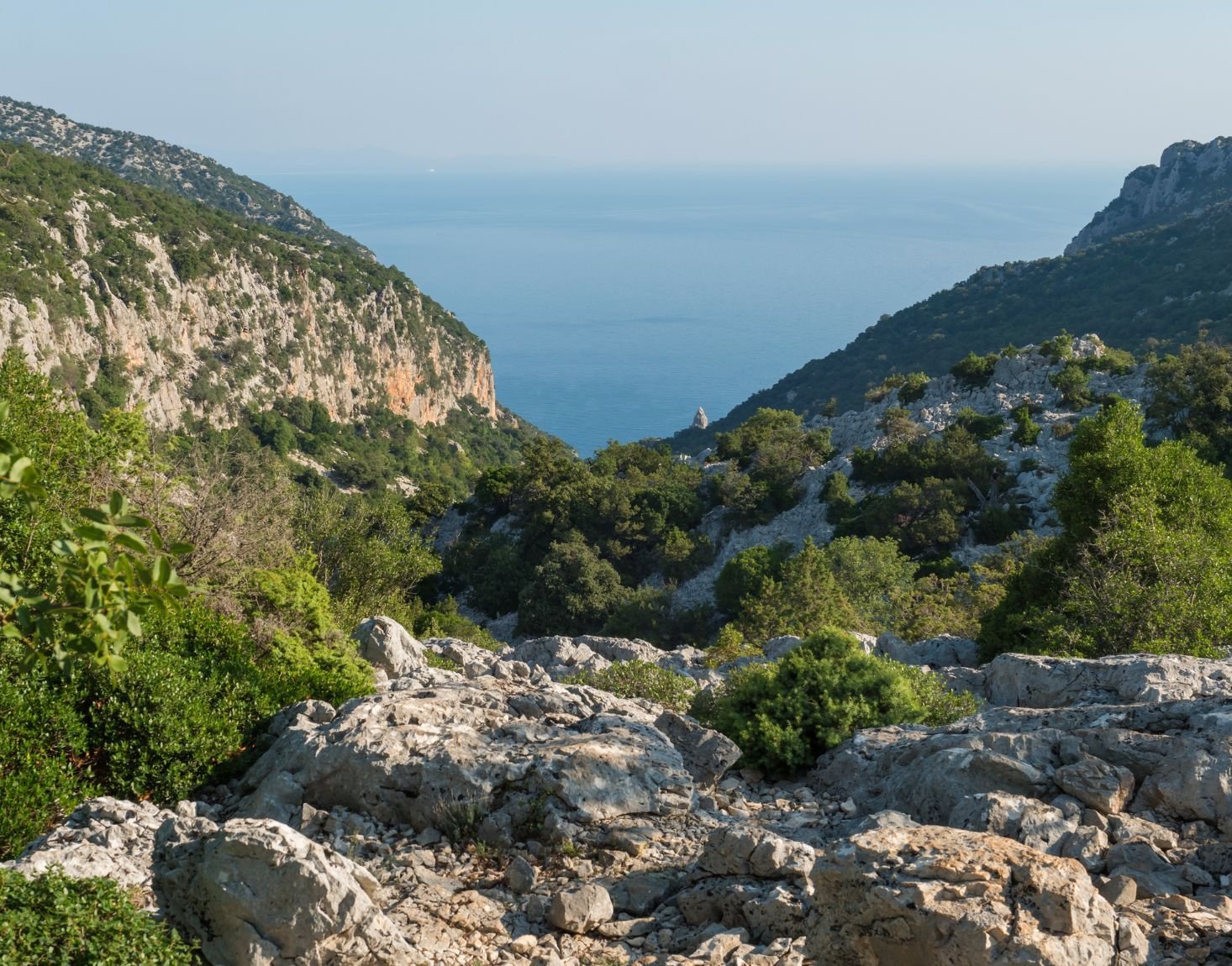
There are numerous reasons why Selvaggio Blu is considered so tough. Much of that is because, as we mentioned before, there are sections that require abseiling and graded climbing - so don’t expect to simply stroll this route. There is specialist climbing knowledge required. The climbs on the trail range from EE to IV+ graded climbing on the UIAA Scale, and are not for those with vertigo.
Another key consideration is that the route is not clearly waymarked throughout. While there is a splash of blue paint here and there to direct you, it’d be tough to find the way based on this alone. As Lonely Planet write, “the trail follows the starkly eroded - and often invisible - trails of goatherds and charcoal burners, teetering around cliffs that plunge into the dazzingly blue sea.”
The trail follows the starkly eroded - and often invisible - trails of goatherds and charcoal burners...
There’s a lot of looking up, down and around to work out which way is best - in areas where GPS signal can be unreliable and the route isn’t obvious. The flora can be so thick in places that if you do lose the route, it can be pretty tricky to get back onto it - and as such, getting lost, without a guide, can be extremely dangerous. Needless to say, trekking with a guide or local expert is the best way to ensure you find the way safely. And it'll also guarantee you don't go thirsty.
Another reason why Selvaggio Blu is a tough trek is that it’s not easy to find water along the way. In fact, you need to bring all the water you’re going to need - or walk parts of the route beforehand, planting water you’ll later come back to - if you hike it without a guide. With a guide, you can have a boat drop off the water for you on your tour, making it infinitely easier and safer for you to trek the route.
Example itinerary: The four stages of the Selvaggio Blu
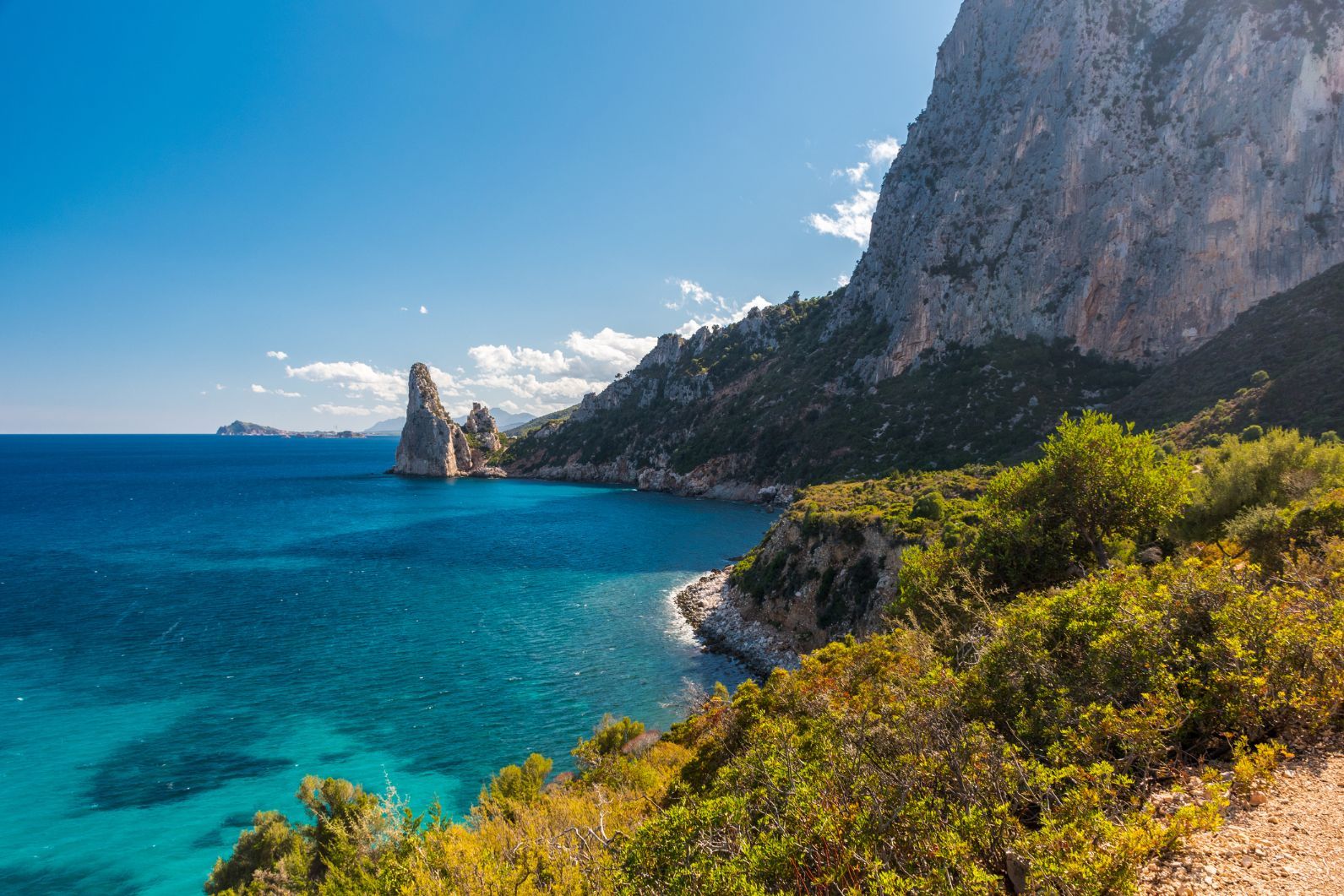
There are various itineraries for Selvaggio Blu, a route which is usually completed in between four and seven days. While you can stay in comfy accommodation either side of the trek, expect to camp or bivouac during the trek itself. This is part of the adventure. The reason we’ve listed the route as 40-45km is that it’s open to some interpretation, and not every trekker will take exactly the same route. That said, the core route can be broken up into these four stages:
Day 1: Pedra Longa to Porto Pedrosu
Day one of the Selvaggio Blu trail is not an easy one, taking you up to the highest point of the tour, at 770m, and featuring sections with a climbing grade of EEA on the UAII scale. You’ll pass through woodland until you get out to the coast proper. Via the Grotta dei Colombi, you’ll descend into a valley without GPS signal, pass shepherd's huts and finish the day in Porto Pedroscu, with plenty of camping space just beyond in Portu Pedroscu. This route takes around nine hours to complete, commonly making it the longest of the four stages of the trekking route.
Day 2: Porto Pedrosu to Cala Goloritzè
Whilst this stage is technically the easiest out of the four on Selvaggio Blu, with a UAII grading of EE, and a six-hour time average, don’t underestimate it. You’ll begin on a mule trail which is relatively easy to follow, surrounded by lush greenery, then climb up to rocky terrain more typical of the trek. Pressing on through a small valley and past remarkable sea views, you’ll pass some old sheep pens, after which navigation becomes a little more tricky. The day ends in Cala Goloritzè, a stunning hidden beach which was declared a National Monument in 1993, and which is only reachable by foot or by boat.
Day 3: Cala Goloritzè to Bacu su Feilau
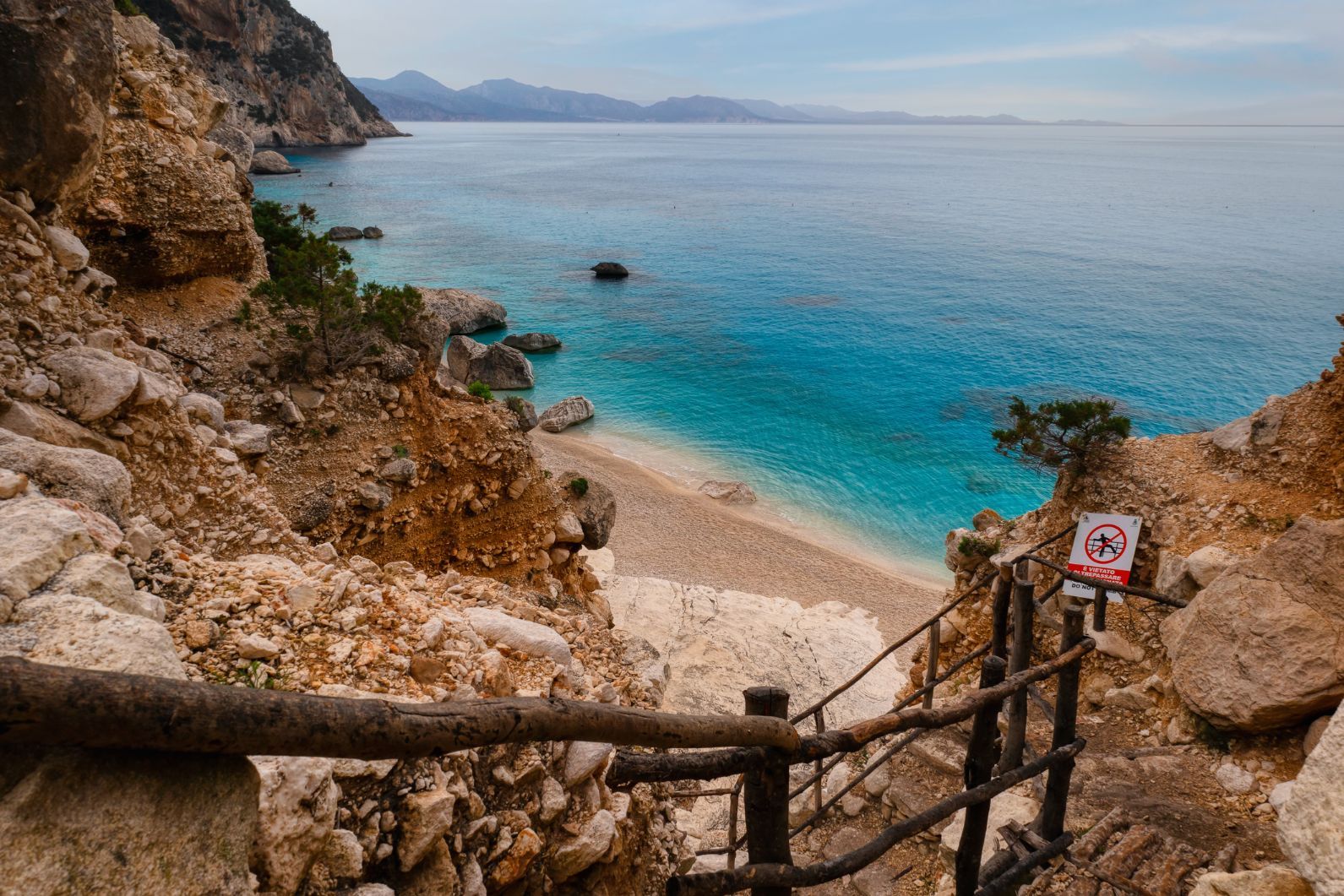
With a IV+ ranking on the UIAA scale, the third stage of Selvaggio Blu is considered to be the most challenging, but it’s also beautiful. Rother’s Sardinia walking guide hails the “breathtakingly beautiful pinnacles on Punta Goloritze, the turquoise-blue sea and greyish-white limestone rocks” visible on the east coast on this segment of trail. You’ll be staring down at stunning rock formations which rise out of the sea like spearheads, dotted and covered in parts with green moss and vegetation.
Many people break this stage up into parts, because there’s so much difficult terrain to navigate on the way. Think eight hours of trekking, including tough, technical rock climbs, abseils of around 20m and a distinct lack of GPS signal. Before the first abseil on the route, there are natural pools surrounded by green, mossy rocks and fig trees. If there has been recent rainfall, you can restock on water. Guides even leave containers here so that they can be re-used.
Day 4: Bacu su Feilau to Cala Sisine
The final day of Selvaggio Blu runs approximately for seven hours to the finish at the beach of Cala Sisine, with the toughest sections getting a high technical grading of IV on the UIAA grading scale. After some early climbs, you’ll make your way across a gully and follow the waymarkers on old mule tracks, into the forests. It’s then a case of weaving and winding on mule trails purpose-built by the trail founders and locals, through dense gullies, to the finish point and sea.
Inspired? Check out our adventure trekking the Selvaggio Blu trail now!

